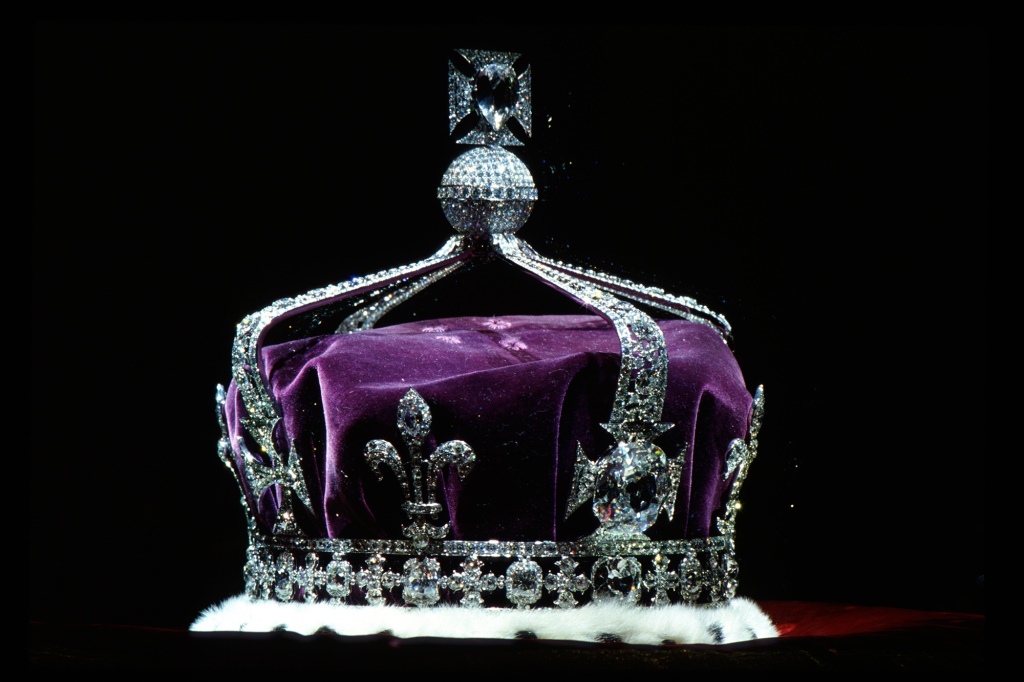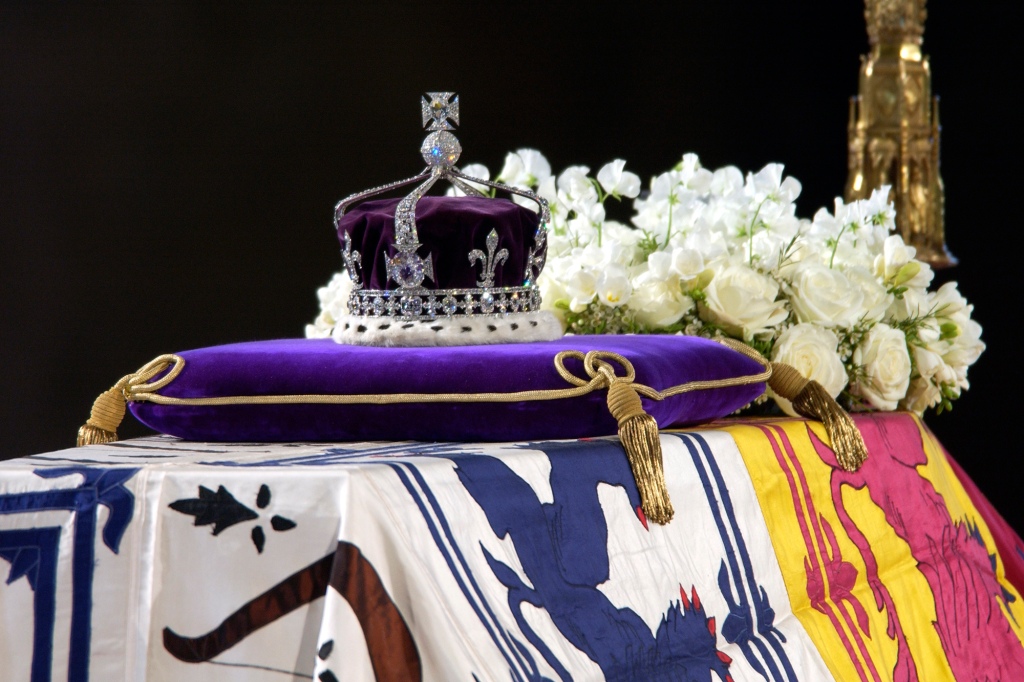More On: Kohinoor
The bloody history of the Kohinoor diamond, the royal jewel that everyone is talking about
After Queen Elizabeth II died last week, critics have asked the British government again to return artifacts stolen by the British Empire. One of the most famous and controversial gems in the world is the Kohinoor diamond, which was taken by the British Empire.
The diamond is now part of the Crown Jewels and is kept at the Tower of London. However, more than one country says it belongs to them. It is said that Camilla, who is now Queen Consort, will wear it at King Charles III's coronation.
The Kohinoor, or "Mountain of Light," was probably found in South India in the 13th century. Before it was cut, it was about 186 carats. Some Hindus think it is the Syamantaka gem from the stories of the god Krishna in the Bhagavad Purana.
Smithsonian Magazine says that the first written record of the stone is from 1628, when it was used to make the head of the "Peacock Throne" of the Mughal Shah Jahan. Even though it was huge, the Kohinoor was less important to the Mughals than the Timur Ruby because they liked colored stones.

After a century in the hands of the Mughals, the diamond was taken by the Persians and then the Afghans. In 1813, the Sikh Maharaja Ranjit Singh took it back to India. Historians Anita Anand and William Dalrymple write in their book "Koh-i-Noor: The History of the World's Most Famous Diamond" that Ranjit Singh's purchase of the gem was a major turning point in its history.
"Ranjit Singh liked diamonds and knew how much money they were worth, but the stone seems to have meant much more to him than that," they write. For him, it was a sign that the Afghan Durrani dynasty had been defeated by the Sikh Empire.
The almost mythical power of the diamond attracted the British East India Company, which started stealing from the Asian subcontinent in the early 1800s. Even so, the diamond stayed in India until 1849, when the Treaty of Lahore was signed by Ranjit Singh's son, Maharaja Duleep Singh. Duleep was only a child at the time, but he had to agree that the British had taken over Punjab and give up the diamond.
The Scottish governor-general of India, Lord Dalhousie, was in charge of sending the stone to England, where it was shown off at the 1851 Great Exhibition. People were upset by how dull the Kohinoor looked at first, so Queen Victoria's husband, Prince Albert, had it cut and polished to make it look better.

At the same time, people began to say that the famous gem was cursed. There were rumors that any man who wore the diamond would have a lot of bad luck or that it was spiritually filled with the blood of past battles.
The Kohinoor never really stood out in the royal collection, maybe because of the rumors. Queen Victoria sometimes wore it as a brooch. Eventually, it was set in the crown of Queen Alexandra, and then in the crown of Queen Mary. In 1937, it was changed so that it would be the main diamond on the crown of Queen Elizabeth, The Queen Mother.
The last time the public saw the Kohinoor crown was in 2002, when it was put on top of The Queen Mother's coffin at her lying-in and funeral.
While the diamond has been in British hands, the Indian government has been asking for it back almost the whole time. When the country got its independence in 1947, it filed a formal complaint, which was followed up when Elizabeth II became queen in 1953. Pakistan, Iran, and Afghanistan have all made claims that are similar to this one.

In the past, the British government has turned down the idea of giving back the Kohinoor. In 2013, David Cameron, who was Prime Minister at the time, said, "They won't get it back." Three years later, the Indian Culture Ministry said it would do "everything possible" to get the diamond back.
Now that Queen Elizabeth has died, the dark history of the British Empire in Asia and other places is being criticized again. Social media users are working together to bring the Kohinoor issue to the forefront.
"Give back Kohinoor if the King isn't going to wear it," wrote one Twitter user.
Queen Elizabeth has died today...
— Vivek Singh (@VivekSi85847001) September 8, 2022
Can we get our #Kohinoor Diamond back, which was stolen by Britisher from #India 🇮🇳
They created wealth on others Death, famine, Torchers & Looting.. #QueenElizabeth #QueenElizabethII pic.twitter.com/dGCcWISmHl
Another user tweeted “Can we get our #Kohinoor Diamond back[?]”
“They created wealth on others [sic] Death, famine, Torchers [sic] & Looting.”
Speaking to NBC, Danielle Kinsey, a professor of history at Carleton University, says it is only a matter of time before the diamond is returned.
“At some point the monarchy will understand that keeping the diamond is more of a public relations liability for them than an asset,” she said.
If the King is not going to wear Kohinoor, give it back no.
— Gabbbar (@GabbbarSingh) September 8, 2022
“I think the same is true for many, many looted artifacts in Britain today and the institutions that house them.”
In fact, the Kohinoor is not the only treasure from another country that is still in Britain. Not only do the Crown Jewels have a number of other controversial gems, like the Timur Ruby, which was part of the Peacock Throne with the Kohinoor in the 17th century, but the country's museums are also full of items that were stolen.
Even though the British Museum and Greece are still fighting over the Elgin Marbles, other places are becoming more willing to give back things that were never theirs. In August, the Horniman Museum and Gardens said they would give 72 bronzes from Benin back to the government of Nigeria.
Even though there have been some small steps forward, British-Indian author Sauruv Dutt told TIME that he doesn't think the Kohinoor or other jewels like it will be back in their home countries any time soon.
Dutt said it would be impossible for them to give up the diamond because the monarchy is "married to this romantic version of empire, even though it is long dead and has lost its power."
“[The Royals] would essentially be eviscerating themselves.”
==============












